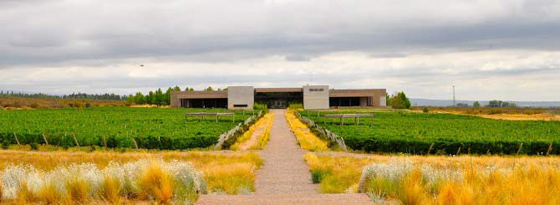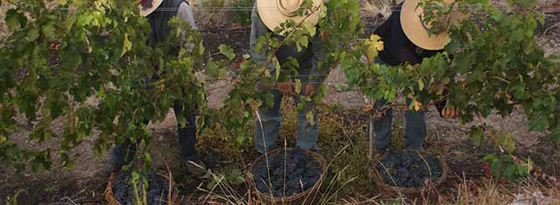Date£º
2014-05-13 10:38 Source£º
winesearcher Author:
Amanda Barnes Translator:
The grapes of the 2014 vintage in the Southern Hemisphere are safely in wineries and, while the weather has not been kind to many regions, overall the quality looks good.

Rainclouds were common over Mendoza during the 2014 vintage
Argentina
For a land that is normally blessed with more than 330 days a year of sunshine, the country's major wine-producing region Mendoza suffered an unusually wet harvest in 2014.
After a record-breaking heat wave early in the season, the year's entire annual average rainfall fell in just three weeks during the Argentinean summer. As a result, many growers had to do more vineyard work than normal in order to limit the botrytis risk.
The harvest was also compressed into a few short weeks, causing more headaches for wine producers.
"It has been a different vintage,"says Pablo Martorell, head winemaker at The Vines of Mendoza. "In December we had record high temperatures [compared with] the past 30 years. Then we had two rainy months. Therefore we have experienced more challenges than normal. For the majority of the reds, ripeness occurred very close together, creating a need for additional logistical planning during harvest."
Susana Balbo, president of Dominio del Plata in Mendoza warned that this was not a year for leaving the fruit out in the vineyard to gain extra ripeness. "In a year like this, long hang times don't work "there is a dilution effect on the quality."
Yields were 10-30 percent lower than average (depending on variety and producer) due to early frosts during the budding season, burning winds in the growing season and the additional canopy management and green harvests during the rain. The varieties that have been hardest to manage are whites, Pinot Noir and varieties with tight bunches like Syrah.
Patagonia, in the far south of the country avoided the problems faced by those in Mendoza, experiencing a dry year.
"This year harvest was good, the crop was healthy and we did not have any issues with pests or rain,"explains Piero Incisa della Rocchetta of Bodega Chacra. "We harvested a bit earlier than usual due to a mild heatwave that occurred in February, but in Rio Negro [a winegrowing region in Patagonia], unlike in Mendoza, the rain came after the harvest."

Matt Wilson courtesy of Wines of Chile | Yields are down but producers are happy with the quality of the 2014 harvest
Chile
Chile's growing season started badly, with widespread frosts in mid-September affecting most of the country and dropping the annual production by 25-50 percent in most regions, with whites and early-ripening reds hit hardest.
Felipe de Solminihac, chief executive of Aquitania, based in Maipo and Malleco in the far south, says: "In general the most-affected varieties were Chardonnay, Sauvignon Blanc and Pinot Noir: the varieties with a short growing cycle that bud and mature earlier and suffered the effects of the spring frosts."
The ripening period brought better news with a less-complicated and notably drier season than last year. In addition, warmer than usual temperatures in the central valleys brought picking times forward by up to 10 days, aided by the low yields.
Coastal regions were cooler than recent years but the weather remained dry, keeping disease pressure low.
"We can see very good health in the grapes,"says Cono Sur head winemaker Adolfo Hurtado. "In terms of quality it is a very good harvest due to smaller production per hectare, a complete absence of rain during the spring and summer, and lower temperatures than normal with a big thermal amplitude between day and night. This has created white wines that are aromatically intense, with very good acidity and freshness. In the reds you can see very intense colors with a high aromatic expression, great concentration and very smooth tannins."
Further south, Maule also suffered frost damage and a dry season, which led to a water shortage and had an effect on both yields and prices. "As a result of the frosts and lack of rain, we have had 30-40 percent lower production in white wines and the price of grapes is 30 percent higher because of it,"explains Jose Spisso, head winemaker at O Fournier.
In the far north of Chile, water shortages are all too familiar for growers in the Elqui Valley, which borders the Atacama Desert. Although this year's crop is looking promising after another dry year, Elqui needs a good winter snowfall to avoid drought next year.
In summary, while there will probably be less Chilean wine reaching the shelves this harvest, the quality looks promising.